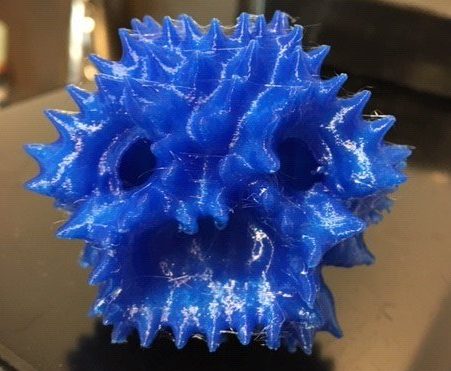Identifying pollen grains under the microscope may be challenging, especially to the untrained eye. This goes also for a multitude of biological structures with complex shapes, whether embedded in tissues or isolated from their original environment.
The course BIO250 – Palaeoecology at the Department of Biological Sciences in Bergen has now started to use 3D-printed models of pollen grains to help students recognize their many facets and aspects. Providing students with 3D-prints instead of (or in addition to) light- or electron microscopy pictures gives them the opportunity to look at these grains from all possible angles.

Scorzoneroides autumnalis – Creative Commons Attribution-NonCommercial 4.0 International License. Willis, Kathy J (2017).
It is however challenging to get an idea of the global shape of the grain based on this single view.

3D print of Scorzoneroides autumnalis
The video at the bottom of this article shows the same grain and helps realize how easy it becomes to recognize the features (spikes, cavities, etc) that characterize the species.

BIO250’s growing collection of 3D prints
For those who have the patience to explore the Internet for hidden treasures, there are millions of 3D models of nearly everything available for download. The National Institute of Health (NIH) provides free models which are relevant for educational activities in the field of biomedical sciences (https://3dprint.nih.gov/). Other commercial platforms also provide models relevant for biology, for free or for sale. Among them are CGTrader, Thingiverse, Free3D, …
Credits and references:
